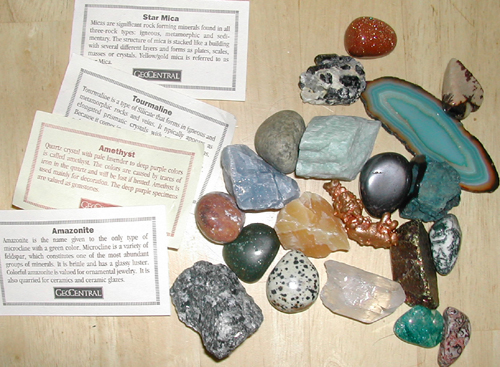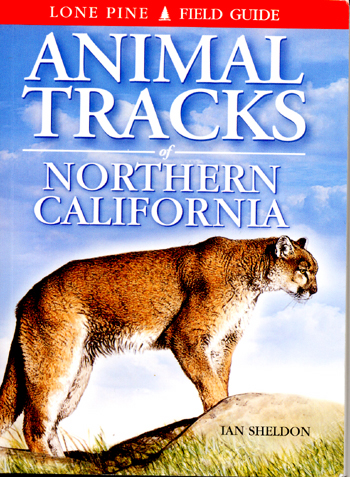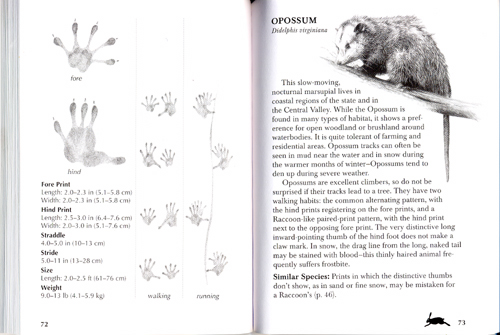As I mentioned last year, the Free-Ride household celebrates both Hanukkah and Christmas. And reliable sources indicate that Hanukkah starts tonight.
That means I’m on the prowl for eight nights’ worth of gifts that will engage the Free-Ride offspring’s brains without breaking the bank. And, I suspect I’m not the only adult on such a mission today.
Thus, it seems to be a good time to add to the Brain-Friendly Giftables compiled last year. Here’s a round-up of smaller items that feel like more than mere “brain-snacks”:

“I got a rock!”
We’ve actually worked this strategy for two Hanukkahs in a row. Each of the eight nights, the kids get a different rock or mineral. You can look for rocks and minerals that come with little cards describing them (which is how they sell them at a lot of science museum gift shops). Alternatively, you can also gift a wee guidebook to rocks and minerals.
They’re pretty (and thus can become items of exchange when your teddy bears or Playmobil pirates need to make purchases), but the different properties of the rocks and minerals (and the different processes which produced them) are a source of curiosity to kids. And watching kids pick up a guidebook and figure out how to use the index will warm a parent’s heart.

Speaking of wee guidebooks, there are a whole bunch of them out there that can engage kids in many facets of their world. Indeed, a guidebook is not just a handy source of information, but it’s also a great excuse to get outdoors with your child and look at the world together. (Think of how much more fun that would be than, say, fighting your way through a shopping mall together.)
What kind of guidebook? Your choice may be influenced by what sorts of things the kid has already expressed an interest in, as well as what kinds of things are close enough to home that you have a decent chance of encountering them on a regular basis. There are bird guides for almost every conceivable region. I suspect the same is true for wildflowers (although in the Northern hemisphere, this isn’t necessarily the best season for that. Star guides are favorites, too.
But I’m partial to animal track guidebooks (like this one).

If you can find one for your geographical region, this may be an ideal time to get out and look for evidence of animals not seen. Snow makes nice tracks, and for those of us who get December rains instead, mud works pretty well, too.

An alternative to a book is a “deck of cards” presentation of information.
These Sierra Club “What’s the Difference?” cards were actually a gift I received a year or two ago, and they deliver interesting distinctions in bite-sized doses. Among the differences explained: rainbow trout vs. brook trout, slough vs. estuary, bacterium vs. parasite, and mink vs. polecat.
Also, I have to give props to the person who wrote the text on the box containing the cards:
[I]f you’re housebound, What’s the Difference provides an invaluable tool for determining (say) whether the nocturnal bouncing you hear outside is a family of wallabies or a mob of kangaroos. Instant peace of mind!
Is there a better gift than peace of mind?
(An array of other “knowledge cards” are available here.)

Maybe a magazine subscription?
The Free-Ride offspring are big fans of Ask, a magazine aimed at 7-10 year olds with a focus on science, history, and other interesting stuff about the world kids are growing into.
A feature of this magazine that is very appealing to the Free-Ride parental units: it is blissfully free of advertising. Woo-hoo!
Sometimes giving a magazine subscription as a gift feels a little like presenting a kid with an IOU (since it takes a while for the first issue in the subscription to arrive). If you can locate the current issue of the magazine at a well-stocked newsstand or bookstore, it may be worth paying the cover price to be able to show your subscription recipient a concrete example of the coolness that will be arriving regularly in the mail.
As usual, if you’ve got a wee gift that packs a big punch which you’d like to recommend, let us know in the comments.

I used to get “Zillions” (Consumer Reports for Kids) which was also free of advertising, as well as almost influencing me into a marketing/consumer research career.
Janet,
The real tradition of Hanukkah never included gifts, especially a gift every night for eight nights. The Hanukkah tradition calls for ‘gelt’ (money). As kids we received real coins to play with or to save. In households where money was in short supply, real money was replaced with chocolate coins. Lighting up the candles and singing songs of Hanukkah was the real fun.
All that is not to say that I do not like the idea of brainy gifts.
Happy Hanukkah!
How about one of these to go with the rocks?
Molecular building blocks! (plastic balls in different colors and sizes that can be connected with sticks) … these are fun for nerds of all ages.
Thought you all might enjoy this
http://www.liverpoolmuseums.org.uk/online/advent/index.aspx
Though it is not advertisement-free (has both a historical ad and a curent ad), so far 2 have a science angle and 3 address the evolution of traditions.
Lee Valley Tools always has some odd and interesting things for kids. Some are science-y, some are just old fashioned and hard to get elsewhere. Candle-powered steamboats, gyroscopes, magnetic construction kits, metal jacks, a book on shadow puppets…
Those old electronics project kits are also still available. Everything from “75 projects in one” to “500 projects in 1”. Now that the chemistry kits can’t contain anything more interesting than salt, and lawn darts are banned, it’s hard to find “toys” that allow self-destruction. *sigh*
Speaking of gelt, coins from different countries around the world can provide some stimulation too. The geography of the countries they are from, different languages and different currencies on them, plus the cultural background behind the symbols or depictions on them.
They make interesting play things, and don’t have to cost a lot. A kid knows that a quarter won’t buy much, but a French Franc has more value to them because it is different and interesting.
How about a Periodic Table? I have a real nice colorful one hanging on the wall here next to my desk and it didn’t cost much. Or anything that has eye appeal from the start with the ability to add more learning and attention later?
Dave Briggs :~)